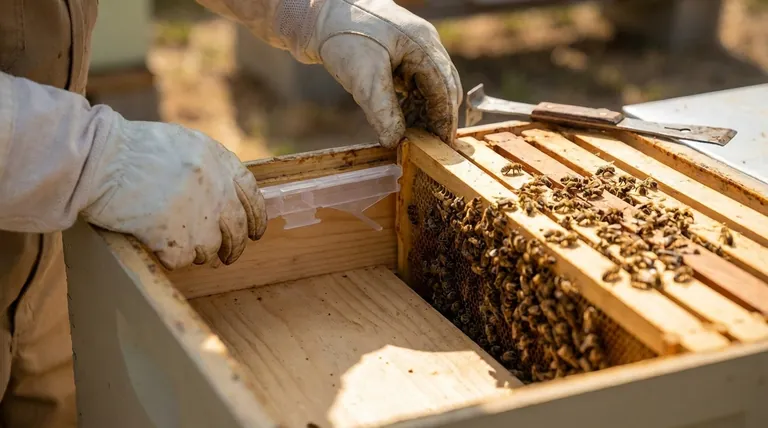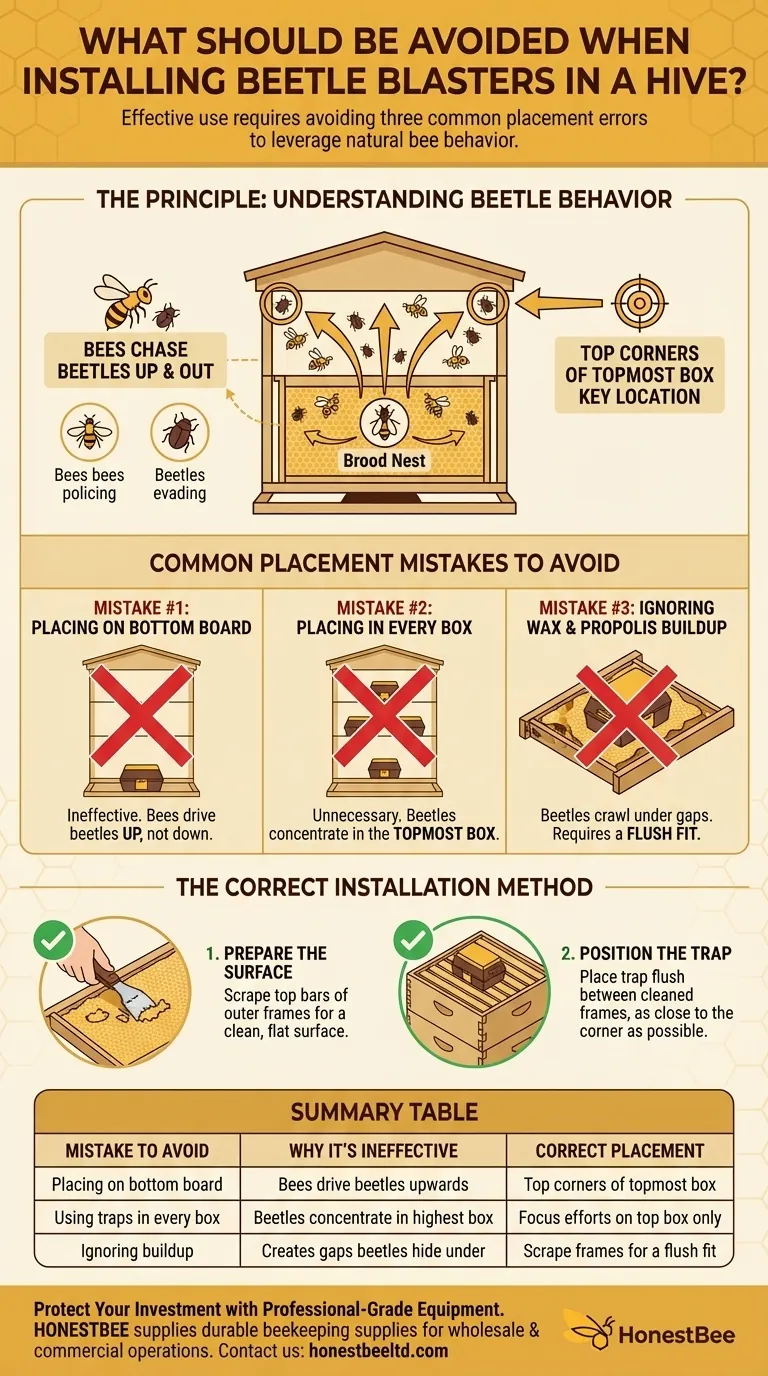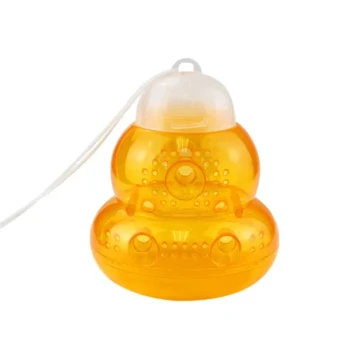To use Beetle Blasters effectively, you must avoid three common placement errors. Do not place them on the bottom board of the hive, do not place them in every single hive box, and do not install them over wax or propolis buildup that prevents a flush fit between the frames.
Ineffective trap placement is the primary reason beekeepers fail to control small hive beetles. The goal is not just to have traps in the hive, but to place them precisely where your bees naturally chase the beetles: the upper corners of the topmost box.

The Principle: Understanding Beetle Behavior
To control a pest, you must first understand its habits. Beetle Blasters work by taking advantage of the natural conflict between honeybees and small hive beetles.
How Beetles Evade Bees
Small hive beetles (SHB) are masters of evasion. Their primary survival tactic inside a colony is to run and hide from the bees, which view them as intruders.
How Bees Police the Hive
Honeybees are relentless guards. They will actively chase beetles, attempting to bite and harass them. This constant pressure forces the beetles to seek refuge in cracks and crevices where bees have difficulty reaching.
Why the Top Corners are Key
The combined effect of this behavior is predictable. The bees' harassment systematically drives beetles away from the central brood nest, pushing them upwards and outwards to the periphery of the hive. They inevitably end up in the top corners of the highest box, which becomes their last resort for safety.
Common Placement Mistakes to Avoid
Placing a trap incorrectly makes it little more than a piece of plastic in the hive. Avoiding these common errors is critical for success.
Mistake #1: Placing Traps on the Bottom Board
Placing Beetle Blasters on the bottom board is highly ineffective. Bees actively drive beetles up and away from the main cluster, not down onto the floor. While some beetles may be found there, it is not their primary hiding place.
Mistake #2: Placing Traps in Every Box
Using traps in every single hive box is unnecessary and counterproductive. The highest concentration of beetles will almost always be in the topmost box. Focusing your efforts here yields the best results and saves time and resources.
Mistake #3: Ignoring Wax and Propolis Buildup
A Beetle Blaster must sit perfectly flush on top of the frames. If there is any wax or propolis buildup, it will create a small gap underneath the trap. Beetles are small enough to crawl under this gap, completely avoiding the trap.
The Correct Installation Method
Proper installation is a simple, two-step process that ensures your traps work as intended.
Prepare the Surface
Use your hive tool to scrape the top bars of the two outermost frames in the top box. You need a clean, flat surface free of any wax or propolis.
Position the Trap
Place the Beetle Blaster between the two frames you just cleaned. Push it as close to the corner and edge of the hive box as possible. This positioning is what intercepts the beetles as they are corralled by the bees.
Making the Right Choice for Your Goal
Your beetle control strategy should match your hive's specific needs.
- If your primary focus is routine monitoring: Placing one or two traps in the top box corners is an excellent way to gauge the hive's beetle population.
- If your primary focus is active infestation control: Ensure traps in the top box are always clean, correctly placed, and properly filled as part of your integrated pest management plan.
Proper trap placement leverages your colony's own defensive behavior to protect its health.
Summary Table:
| Mistake to Avoid | Why It's Ineffective | Correct Placement |
|---|---|---|
| Placing on the bottom board | Bees drive beetles upwards, not down | Top corners of the topmost box |
| Using traps in every box | Beetles concentrate in the highest box | Focus efforts on the top box only |
| Ignoring wax/propolis buildup | Creates gaps beetles can hide under | Scrape frames for a flush, secure fit |
Protect Your Investment with Professional-Grade Equipment
Are you a commercial apiary or beekeeping equipment distributor struggling with small hive beetle infestations? Proper tools are the foundation of effective pest management.
HONESTBEE supplies durable, reliable beekeeping supplies and equipment designed for the rigorous demands of wholesale and commercial operations. We help you maximize hive health and productivity.
Let's strengthen your apiary's defenses together. Contact our expert team today to discuss your wholesale equipment needs and build a more resilient operation.
Visual Guide

Related Products
- Reusable Clear Small Hive Beetle Traps for Beehives Beetle Trapping Tools
- Reusable Aluminium Beetle Trap for Small Hive Beetles Silver Bullet
- Plastic Beetle Blaster Trap Beekeeping Tools and Supplies
- Black Plastic Beetle Barn Hive Beetle Trap for Beehives
- Removable Washable Hive Beetle Trap Attractants for Small Hive Beetles
People Also Ask
- What is the recommended number of beetle traps per hive? Optimize Your Hive's Beetle Defense
- What are the steps for installing hive beetle traps? A Guide to Effective Beetle Control
- What are the advantages of handheld beetle blasters and traps? Simple, Chemical-Free Hive Protection
- How should filled beetle traps be handled? Safely Remove and Dispose to Protect Your Hive
- How do Beetle Blasters trap adult beetles? A Simple, Non-Chemical Pest Control Solution



















